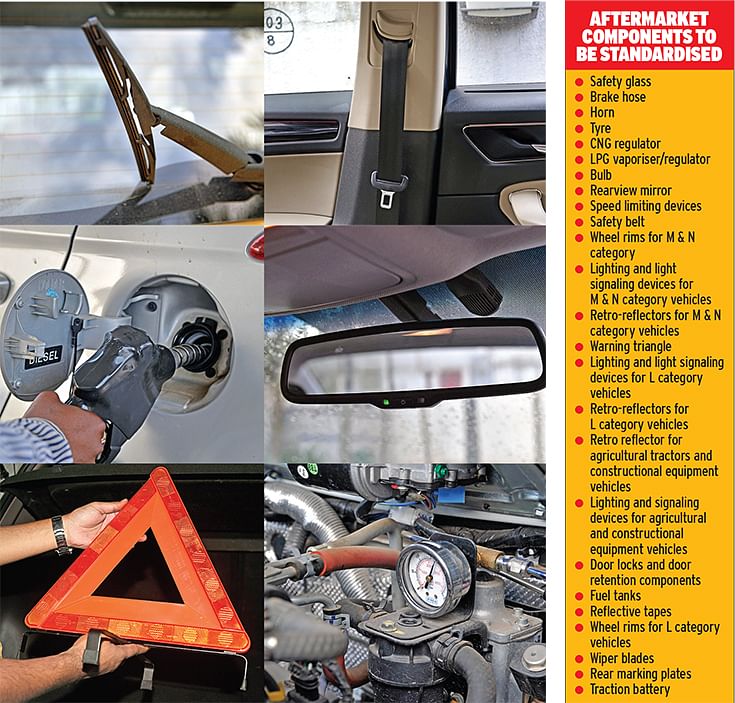Indian aftermarket set to get standardised for the first time
A list of 25 safety critical components in the aftermarket has been identified to be standardised under AIS37.
Two years ago, when the Automotive Components Manufacturers Association (ACMA) formed its aftermarket committee, its initial objective was to support the aftermarket trade and develop the market. Ramashankar Pandey, chairman of the committee, and the team brainstormed and arrived at standardisation as the key need of the sector, which is set to clock a turnover of Rs 70,000 crore in FY2019.
“Yes, the size is very big, but that doesn’t mean that our ACMA members who are manufacturing genuinely are gaining the market. For that, we adopted the statement ‘Organise, Standardise, Digitise the aftermarket’,” says Pandey, who is also the managing director of Hella India Lighting. Cut to now, ACMA, after consultation with the Ministry of Road Transport & Highways (MoRTH) and the Society of Indian Automobile Manufacturers (SIAM), has drafted a notification which it will present to MoRTH in a week or so.
A list of 25 safety critical components in the aftermarket has been identified to be standardised under AIS37. “The Ministry of Road Transport has asked us to look at these safety related items first and create standards. Standards have been created. And as a result of an accreditation or mandatory certification, definitely the usage of spurious parts will come down,” says Ram Venkataramani, president, ACMA. Ram is also the managing director of India Piston Rings.
The spurious parts menace has affected the Indian component industry for long. The lack of any regulation helped spurious parts makers take undue advantage. Efforts by various component makers and OEMs to curb the malpractice haven’t deterred many yet. “Can you imagine that (quality of) every car sold in this country is regulated only till it leaves the OEM? The moment it leaves the OEM, this country doesn’t have a standard,” rues Pandey. He is happy that’s going to change now.
The new standardisation will also play an important role in safer mobility. India sees the highest number of deaths due to road accidents. Usage of spurious/substandard parts also contributes to it. According to an ACMA study, 30 percent of passenger vehicle components come from the unorganised segment. For commercial vehicles it is 50 percent, 30 percent for two-and three-wheelers, and for tractors it stands at 40 percent. A much-needed regulation in the component industry is set to take place. Small the number of components may be, but the list will grow gradually. By FY2023, the Indian aftermarket sector is projected to reach an annual turnover of Rs 98,000 crore. A swift implementation of the proposed standards and expanding the list of regulated components will ensure that the industry gets highly organised. That will be key for the success of ACMA’s ‘India Aftermarket 2.0‘ mission.

RELATED ARTICLES
VinFast’s second plant in Vietnam goes on stream ahead of India factory
Vietnamese EV maker’s second plant in its home market, which has a 200,000 EVs-per-annum capacity, will focus on produci...
Continental exits TBR market in India, shifts focus to car and SUV radials
German tyre manufacturer aims to tap the double-digit market growth opportunity for big SUV and luxury car tyres which w...
New ZF SELECT e-drive platform gives EV makers a choice in 100 to 300 kW range
Modular e-drive platform optimally matches 800-volt overall system and components such as the electric motor and power e...





 14 Feb 2019
14 Feb 2019
 10639 Views
10639 Views


















 Autocar Professional Bureau
Autocar Professional Bureau




